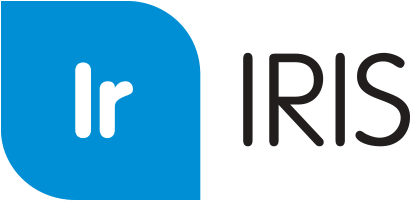COVID-19 has upended higher education. Everyone is trying to figure out how best to adapt to the “new normal.” (Forgive us. Like you, we also recognize how overused that term is.) Faculty and students are adjusting to remote learning environments, while administrative staff are modifying their daily operations to remote settings as well.
We acknowledge the importance and priority of setting up distance learning that works for students and faculty alike, but our focus today will be on the administrators at a college or university.
Simplify
Sure, there’s a good chance your institution had some sort of disaster preparedness plan written and stored away somewhere. But could it have foreseen something like this? Doubtful.
So, what can be done? In a word: simplify.
Your institution’s strategic plan may have a paragraph or two about streamlining operations, reducing or eliminating redundancies, and improving your operations. Now, more than ever, is the time to operate and execute both efficiently and effectively.
Our purpose here is to help you, by sharing some ideas on how you – as part of a college or university administration – might begin to be more effective and efficient during this pandemic.
Questions
Just because there is a pandemic doesn’t mean important questions stop getting asked. Some questions remain the same, some get modified, and some entirely new questions get raised. Here are just a handful of questions being asked within higher ed:
- How are our enrollment numbers looking for the fall semester?
- How do they compare with last year?
- If we do not see all our students returning, how many are still undecided?
- If additional students are needed, who are our best recruiting targets?
- How can we best make use of available scholarship funds?
- How well are our students doing in their online classes?
- How does this compare to average success when held on campus?
- Is the data getting to our decision makers quickly and effectively?
- Are we able to query all necessary data sources, to get the full picture?
- What systems are on premise versus in the cloud?
- Can we improve the efficiency of this data collection and reporting process?
- Could we provide the data in a way that reduces effort for the data consumer?
Now vs. Then
Your processes may have worked just fine before the pandemic. Can they work now? For instance, if your institution is one of those that are considering a remote or hybrid model, it may no longer be feasible to rely on a hallway conversation or drop in on a colleague for a quick discussion to get answers.
Decision makers are facing brand new scenarios for issues such as student retention. As a result, they may – more than ever before — need access to data without having to constantly reach out to an IT or functional analyst. (And being able to get this information may now require access to systems that have not been integrated up to this point.)
Optimizing Technology
Yes, your institution has invested in technology. But now you should make sure that technology is being optimized. Many colleges and universities around the world now need to:
- Understand and make the best use of the technology they already own
- Simplify how they gather evidence for decision-making
Here are some suggestions to consider as you move forward.
Assess Where the Data Resides
It’s always good to know what data sits where. (This applies regardless of being in a pandemic.) Does this technical landscape look familiar?
- ERP (Enterprise Resource Planning) system
- CRM (Customer Relationship Management) system
- A degree audit system
- LMS (Learning Management System)
You likely have one or more of the systems listed above, as well as others. In addition to thinking about what systems you have, think about what data they contain. Do multiple systems hold student data?
And of course, which of these systems are on premise? Which are in the cloud?
Examine What Processes Must Change Because of the New Normal
Reporting
As of this writing, we are a few months into the COVID-19 pandemic. If you haven’t already done so, now is a good time to examine what processes have changed – or need to change.
Can you report from the systems mentioned above in an efficient manner? Perhaps, previously, someone had to be on campus to pull data out of a particular system. Or, if you needed to share data, you could simply walk over to another office and share paper output. Similarly, when reporting changes needed to be made, someone could just walk over and relay those changes in person. These steps may not be possible given current circumstances.
How is your reporting set up?
- At some institutions, one reporting tool is set up to meet everyone’s needs
- At other schools, specialists in various departments rely on reporting tools that operate independently of one another
And what of other processes? Check printing, for example, might require a special printer in a campus office. How does that work today?
Personnel
Unfortunately, the pandemic has forced colleges and universities to furlough or lay off staff. Or, staff may have chosen to leave or change jobs on their own. This, too, is something that must be considered when examining processes – ensuring steps are in place to account for transfer of knowledge and training.
In addition, as the landscape and processes evolve, be aware that those you have trusted with your business may also be evolving and adapting to make themselves more useful during this time.
Check in With Your Technology Vendors
We posed a lot of questions so far. If you have all the answers, great! If you don’t, that’s okay too. To help you get those answers, don’t be afraid to reach out to your technology vendors. They should understand both higher education and your institutional needs.
Reach out to them. Find out who your advocate is, or who manages the user community. Ask them your questions. Along with your questions, let them know what is going on with you and your institution. This could be:
- How things are changing
- What information your leadership needs
- What other systems/products are part of your technical landscape
- What initiatives are being undertaken
- What has been working well (And what hasn’t)
- What challenges you have now that you didn’t have before
- What pain points you are seeing/experiencing
By talking with your vendor(s) you could also learn some things that would be of great help:
- There are product capabilities you own, of which you were not previously aware
- If you are using an older version, an easy update may allow you to use new features
- Training may be available 24/7 via recorded, web-based videos
- Your vendor may have recently partnered with one of your other vendors
- Integration now exists where it did not before
- That integration may be a version or two beyond what you have currently installed
- Special programs may be available to help deal with the COVID-19 effects on business (training, consulting, upgrades, etc.)
- Your vendor may have the solution or a workaround to one or more of your current challenges or may have suggestions to help improve processes and save time (aka Simplify!)
Conclusion
We understand the challenges this pandemic has presented and wish all of you the best in rising to meet those challenges. Hopefully the questions raised, and ideas suggested, here will help you deal with the present situation and prepare you for the future when it comes to improved data and processes. In the end, the three key takeaways are these:
- Administrative simplification is critical time at this time
- Even more attention must be paid to accessing the systems and data needed to analyze and assess student retention
- Working remotely requires adapting your systems and processes to current circumstances – something with which your technology vendor should be able to assist








0 Comments
0 Comments